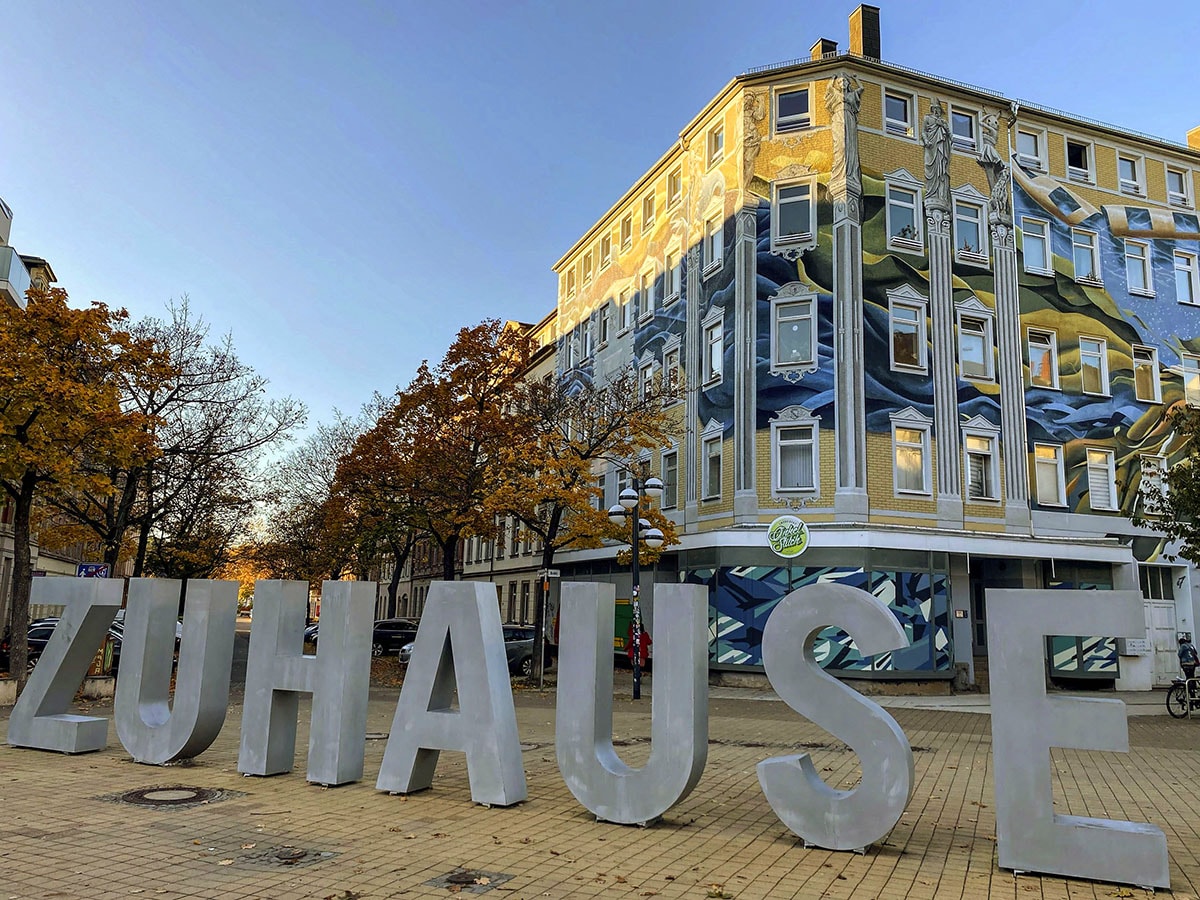 Known as Karl-Marx-Stadt under communism and later as a hotspot for far-right violence, the eastern German city of Chemnitz is seeking to reinvent itself as a 2025 European Capital of Culture. Photography Femke Colborne / AFP©
Known as Karl-Marx-Stadt under communism and later as a hotspot for far-right violence, the eastern German city of Chemnitz is seeking to reinvent itself as a 2025 European Capital of Culture. Photography Femke Colborne / AFP©
Known as Karl-Marx-Stadt under communism and later a notorious hotspot for far-right violence, the eastern German city of Chemnitz is now seeking to reinvent itself as a 2025 European Capital of Culture.
Chemnitz plans to welcome around two million visitors to 150 arts and cultural projects this year, including museum exhibits and a colourful mix of music, theatre, film and dance shows.
The festivities, themed “C The Unseen”, seek to highlight the cosmopolitan side of the city of 250,000 people in Saxony that tends to be overshadowed by the bigger eastern urban centres of Dresden and Leipzig.
The year-long programme will include panel talks, street chess, queer culture, toy-making, a cooking marathon and a new opera with a libretto written by Booker Prize-winning author Jenny Erpenbeck.
Chemnitz mayor Sven Schulze hopes the extravaganza will change perceptions about Chemnitz, where in 2018 right-wing extremists were accused of hunting down migrants through the streets between drab Cold War-era prefabricated housing blocks.
“Chemnitz is a city that often finds itself in the shadows, that is underestimated, that has experienced many disruptions in recent decades,” said Schulze, from the Social Democratic Party of Chancellor Olaf Scholz.
“As a Capital of Culture, we want to shine a spotlight on this city, on its unseen potential, on its people,” he told AFP.
But not everyone in Chemnitz is on board with the planned rebrand, which has poured new fuel into combustible culture wars raging far beyond the city ahead of a general election in February.
Right-wing groups in the city council last year introduced a motion calling for Chemnitz 2025 to be cancelled, calling it “delusional” and an “embarrassment”.
Also read: Rio de Janeiro introduces tax-free shopping for tourists
‘Some kind of circus’
They slammed the project as a waste of taxpayer money at a time when many locals are financially struggling, and plan a demonstration against it on the launch date, January 18.
Chemnitz, a 19th-century textile industry hub once known as the “Manchester of Saxony” state has a turbulent history.
Communist East Germany renamed it Karl-Marx-Stadt in 1953, and a giant bronze monument of his head was erected in the city centre before the inscription “Workers of the World, Unite!”
After the Berlin Wall fell in 1989, Chemnitz was battered by the closing of factories, sweeping job losses and a population decline, like much of the rest of the region.
As elsewhere, disorientation and discontent fuelled xenophobia and right-wing extremism.
In 2018, tensions boiled over when a Syrian immigrant killed a German man in the city, provoking days of protests that turned into violent riots.
The far-right AfD has found strong support in Chemnitz and scored 26 percent of the vote in the city at regional elections last September.
Lawyer Martin Kohlmann, 47, a founding member of the “Freie Sachsen” (Free Saxons) secessionist movement and of the right-wing populist group Pro Chemnitz, was among those who took to the streets in 2018.
He believes the money for Chemnitz 2025 would be better spent to “make the city nice for its own people and not attract tourists and investors and whoever else”.
Local people want to see investment in “museums, swimming pools, public transport”, Kohlmann argued, rather than for “some kind of circus coming to town”.
Also read: China’s frigid northeast thrives on ‘little potato’ tourism boom
Far-right fury
Anja Richter, head of the city’s Gunzenhauser museum and art gallery, said Chemnitz wants to move on from the “huge shock” of 2018.
“We are all trying to leave that behind us, to shake it off and do something about it, especially in the cultural scene,” she said.
But in the run-up to Chemnitz 2025, many arts and culture organisations have found themselves targeted by far-right activists.
A recent local government report said arts groups had been subjected to “political pressure, defamation and threats in social networks, open threats, disruption of events and physical assault”.
In response, Chemnitz 2025 will also include projects meant to tackle right-wing extremism.
A new documentation centre will focus on the crimes of a murderous neo-Nazi militant group active in the early 2000s called the National Socialist Underground.
Pubs, restaurants and other sites that support the cultural events will welcome visitors with special stickers labelling them “allies” of Chemnitz 2025.
Mayor Schulze said that “we are doing a lot to ensure that no one has to be afraid of coming to Chemnitz”.
Curator Agnieszka Kubicka-Dzieduszycka—who runs a project showcasing garages that have housed iconic “Trabi” cars—said that “of course I am concerned about what will happen on January 18”.
But she added optimistically about the festival’s supporters that “I believe there will be more of us”.
